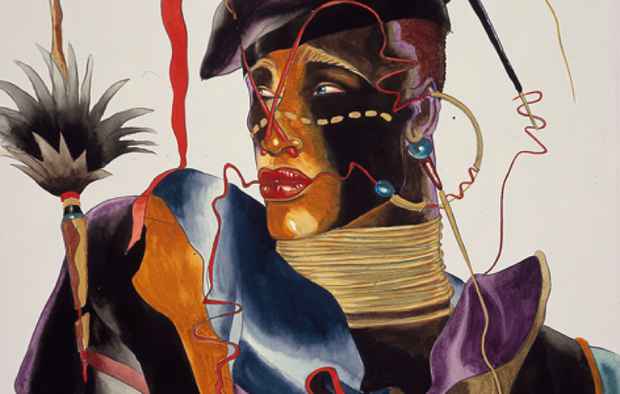Antonio López “Future Funk Fashion”
El Museo del Barrio

[Image: Detail of Antonio López, Portrait: Angelo Colon, 1982, Pencil/watercolor on paper, 31 x 23 inches, (Ramos / Antonio: Three Decades of Fashion Illustration / London: Thames & Hudson, 1995 / p.160)]
This event has ended.
El Museo del Barrio presents an exhibition in tribute to Puerto-Rican born artist and fashion illustrator Antonio López (1943-1987) and his prolific three-decade career on the New York fashion scene. The exhibition will draw attention to the importance of López’s working relationship with his life-long business partner, Juan Ramos, and to his impact on integrating models of color into a prominent role in the world of high-fashion for the first time.
ANTONIO LOPEZ: Future Funk Fashion will be divided into the following core themes, which are understudied aspects of López’s work: the body (with subthemes on the fractured body and the body of color), music, the street, and the influence of Afrofuturism. Among the most important of these themes is the power of the street, including graffiti, music, politics, and dance, and how these influences figured into López’s work. During his lifetime López’s colorful and flamboyant illustrations appeared prominently in Vogue, Elle, Vanity, Harper’s Bazaar, The New York Times, Interview and Women’s Wear Daily, drawin g fresh attention to race, gender and body images within the world of high fashion.
El Museo’s exhibition will bring together a unique assemblage of over 150 works including López’s prolific drawings, Instamatic photographs, archival photographs, his clothing and shoe designs, and uniquely focus on how López’s and Ramos’s work impacted a new canon of beauty in the 1970s and into the 80s. Thematic sections within the exhibition will be built around his illustrations, his relationships with particular models (Grace Jones, Pat Cleveland, Jessica Lange and Jerry Hall aka: “Antonio’s Girls”), his shoe and jewelry designs, and images of people he came to know and love from the streets of New York City.
The show’s co-curators are Rocío Aranda-Alvarado, Curator at El Museo del Barrio, and Amelia Malagamba-Ansótegui, a scholar from Arizona State University and University of Texas San Antonio. Dr. Malagamba’s 2003 essay on Antonio López for the Smithsonian Latino Center continues to be a key text today for the ways it explores López’s attentiveness to race, gender and the body. According to Dr. Malagamba: “The work of Antonio is a manifesto drawn on paper that argues for beauty as a constant act of transgression and negotiation. He understood the dominant discourses of culture in the world of fashion at that time, but he was able to re-draw the lines of this world by creating a narrative of beauty informed by his Caribbean sensibilities, his brown body and his desire for change.”
A large selection of works will be loaned from the Estate of Antonio López and Juan Ramos, directed by Paul Caranicas. Additional works will be borrowed from various private collections in New York City, including the collection of designer Narciso Rodriguez.
Antonio López was born in Utuado, Puerto Rico on February 11, 1943. His family migrated to East Harlem in New York City when Antonio was seven and he attended P.S. 77 on East 104th Street. To keep her son off the streets, López’s mother, a seamstress, would ask him to draw flowers for her embroideries. He also helped his father, a mannequin maker, to apply make-up and stitch wigs onto the figures. At the age of twelve, López earned a scholarship to the prestigious Traphagen School of Fashion, which provided Saturday programming for children. From there he went on to attend the High School of Art and Design and the Fashion Institute of Technology.
López rose to prominence illustrating fashions for Women’s Wear Daily and The New York Times. He eventually became a freelance artist for many of the top fashion publications. He collaborated with the noted designer Charles James, creating an illustrated inventory of James’ fashion designs (now in the collection of the Chicago History Museum). He later moved to Paris with Ramos, where they both worked with Karl Lagerfeld and many other designers.
Through his work, López made great strides in exploring and representing the gender-based, ethnic or racialized body within the world of high fashion. His imagery helped to develop and underscore a new canon of beauty throughout the 1970s and 1980s. He died of complications related to AIDS on March 17, 1987, at the age of 44.
Media
Schedule
from June 14, 2016 to November 26, 2016